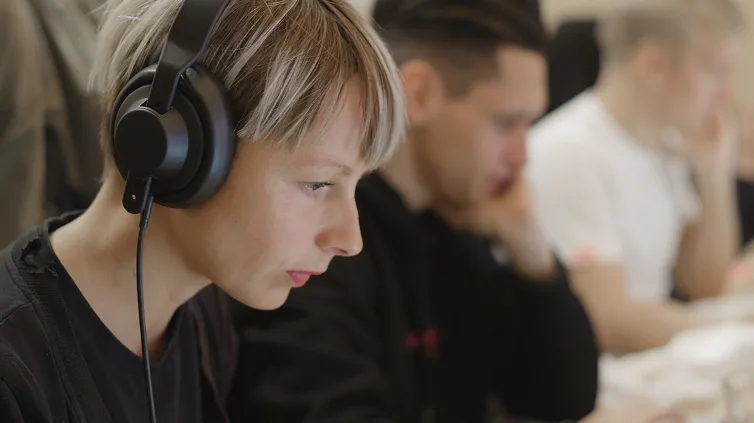Greenhouse is a recruiting software company that tends to be a little obsessive about hiring. After all, it’s what their company is all about. But obsession doesn’t mean perfection. One challenge they faced? Hiring technical people. Here’s how they tackled the issue head on.
We had a good hiring process, but…
A few summers ago, we thought our recruiting process was in pretty good shape. But then some problems started appearing. So our new tech recruiter Lauren Allanson took a 6-month deep dive into Greenhouse reports, candidate comments, Glassdoor feedback, and emails we’d received.
We came to the following conclusions:
Senior candidates didn’t find our interview process challenging enough, so they were less inclined to accept offers.
Our interviews were skills-focused and didn’t give candidates a chance to learn the Greenhouse story and purpose.
We had redesigned our internal career ladders, but our interview kits weren’t updated to reflect them.
Candidates were failing too late in the process because we didn’t test technical skills in the initial screening.
By the end of the year, we’d made some changes that helped. We’d also hired 13 engineers (go Lauren!) and we were still aggressively recruiting.
But our engineers started burning out from all the interviewing. Obviously, we had more work to do.
Use data to determine pain points
“We need to make this thing more challenging and interesting, especially for senior people.”
By taking a deep dive into our data, we realized a few more things.
Observation 1: too much interviewing
The high frequency of interviewing was costing us expensive company time.
Observation 2: low conversion rate
We weren’t hiring many of the candidates who came in for interviews.
Observation 3: easy interviews
Candidates weren’t finding our skills assessments challenging enough—and our engineers agreed.
Observation 4: one-way conversations
Candidates didn’t have enough time to ask engineers questions during their interviews. As one candidate put it:
“My in-person technical interviews felt somewhat rushed without much time to build rapport or have a conversation—it was mostly me coding.”
Set new goals
Now that we had a clear understanding of the problems, it was time to figure out how to address them. We drew up three main goals:
Test technical skills earlier in the interview process.
Increase the conversion rate from onsite interviews to offer.
Create clear evaluation criteria for onsite candidate performance.
And here are the steps we took to get it done.
Redesign scorecards to align with internal career ladders
We defined the knowledge, skills, and abilities (KSAs) for each employee profile across different positions. This included all levels of software engineers and tech leads. Then we aligned our scorecards and interview kits with the new career ladders.
Test practical skills earlier in the process
We reorganized the structure of the interviews so that we could test technical skills earlier on.
Allow time for meaningful conversation
We added a non-technical interview to educate candidates on the company, teams, roles, and Greenhouse’s vision and strategy. We also gave candidates more unstructured time with engineers to ask questions.
Create clear guidelines for evaluation
For interviewers, we clearly defined what we expected candidates to know at each level. This had the added bonus of making our existing engineers more familiar with career ladders and what to expect for their own career progression.
Why it worked
There were three keys to our success:
getting buy-in from engineering management
allocating time for planning and strategy meetings
involving many engineers in the process
We started by outlining the problems, solutions, and plans for measuring success. This ensured that everyone was aligned before taking action.
Then we presented the plan to the VP and Director of Engineering. Everyone agreed the changes were needed, so we created a task force to tackle the issues.
One of the Product Engineering tech leads championed the project and helped with a lot of the heavy lifting. They drafted the interviews and tested them internally before rolling them out to candidates.
And we continue to make updates—from how interviewers phrase questions to outlining better instructions for evaluating candidates.
So what happened?
Screening-to-onsite conversion rate improved by 50%
Onsite-to-offer conversion rate went up from 14% to 22%
Survey results improved for our key indicators: “Overall, my interviewing experience was a positive one” and “I found this interview process to be challenging.”
Final thoughts
Do you have doubts about your interview process? Here are some things to keep in mind:
You’ll never know what candidates think of your interview experience unless you ask them. We also send an email following on-site interviews asking candidates to fill out reviews on Glassdoor.
Even good things can be improved. Look for ways to improve and iterate on your existing processes, including the ones that are working.
The people conducting interviews at your company surely have ideas about how to make things better. But they might not know the best way to share these thoughts. Ask interviewers for critical feedback.
We all have gut feelings, but it’s important to dig into your data to validate your intuition. Plus, some of your data might give you some surprising new insights.
Melissa Suzuno is Content Marketing Manager at Greenhouse, where she gets to share her love of the written word and endorse the use of the Oxford comma on a daily basis.







